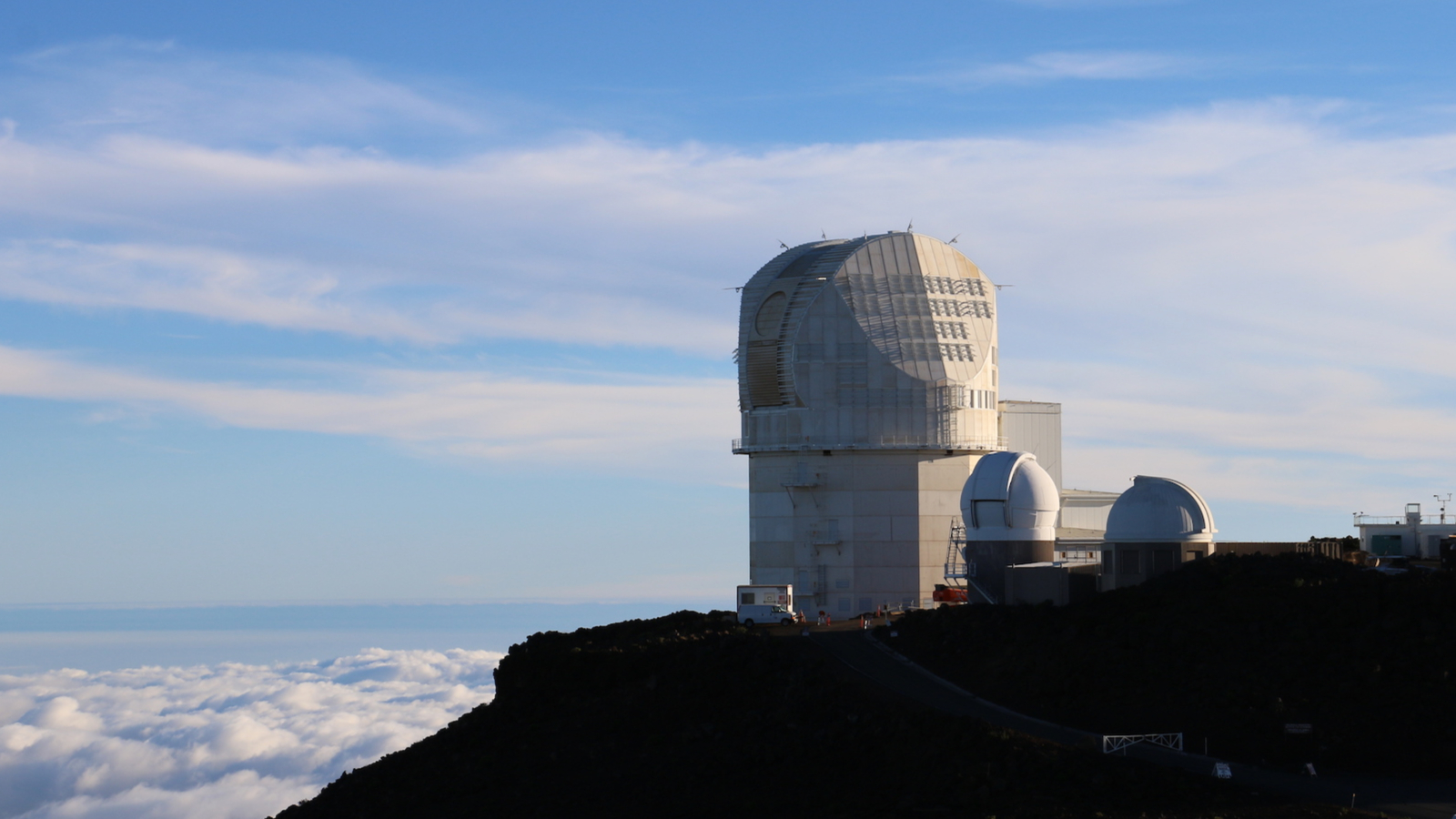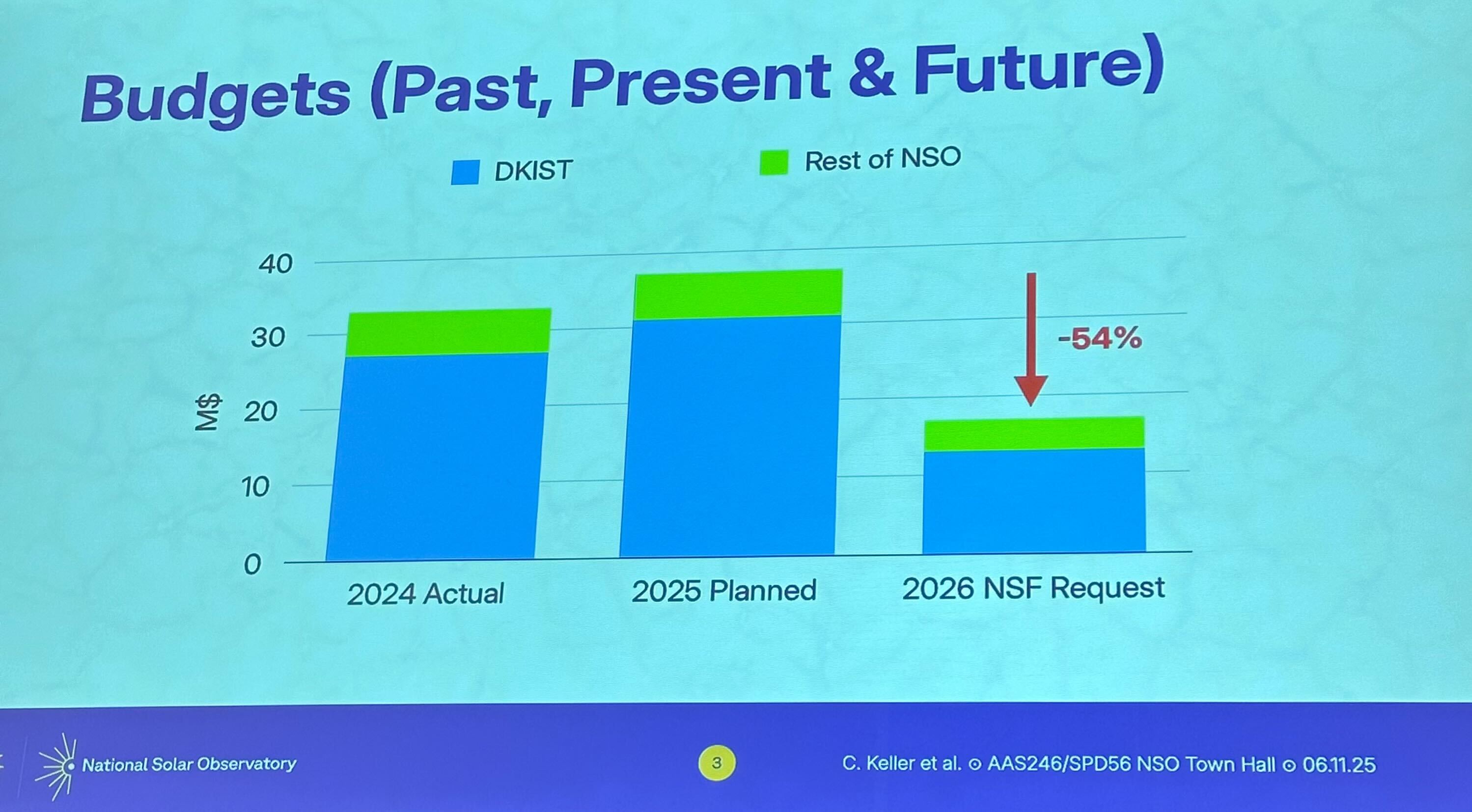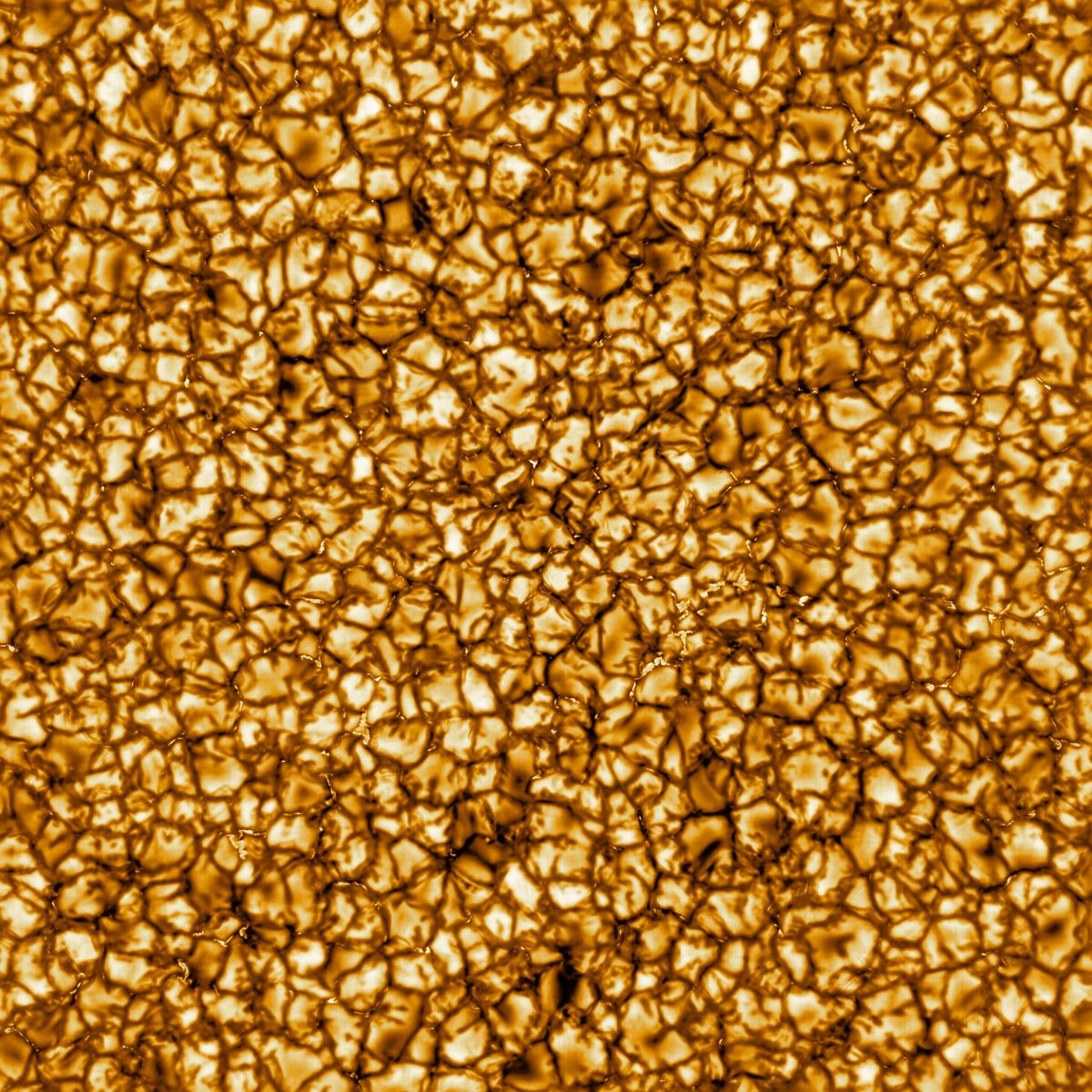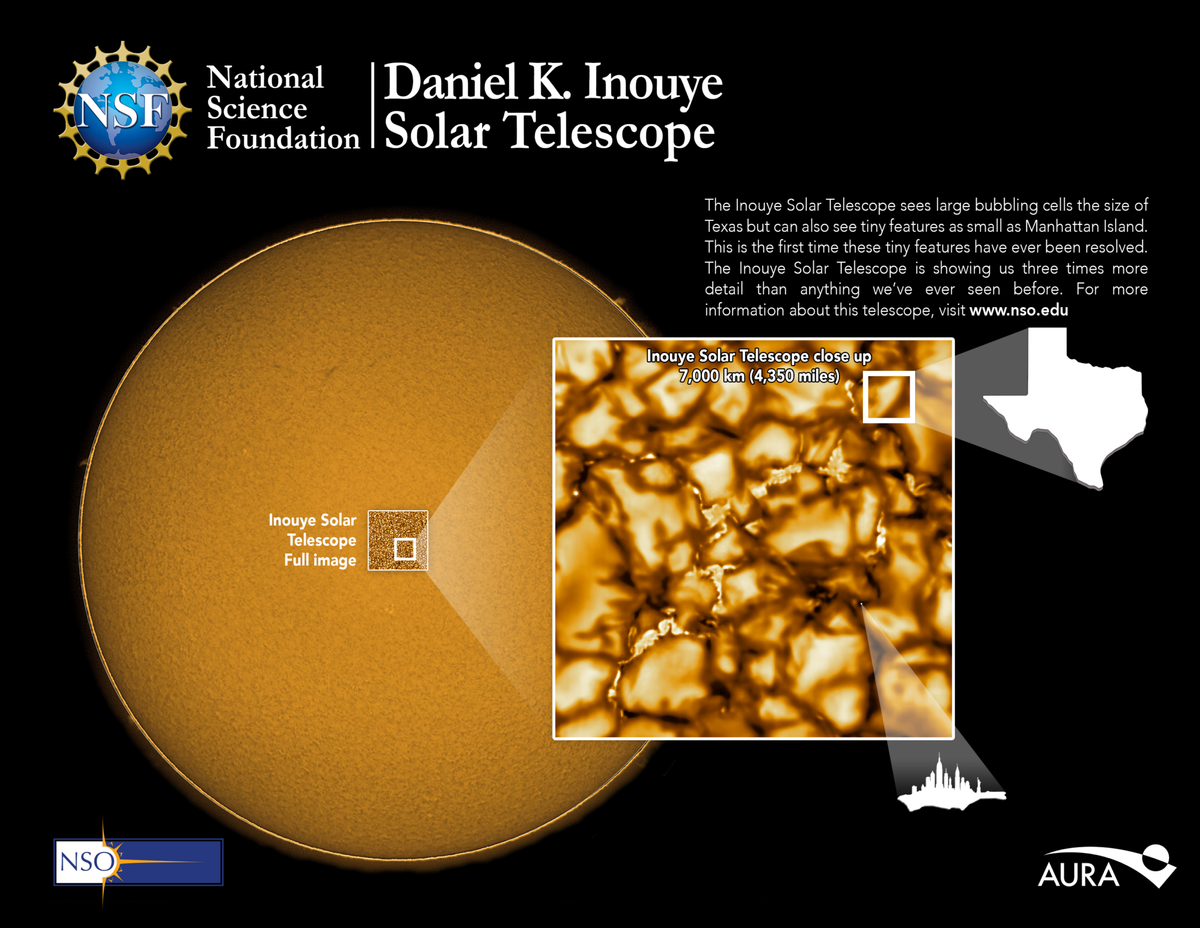Trump's 2026 budget cuts would force the world's most powerful solar telescope to close
"There's no way for us to operate such a complex facility."

ANCHORAGE, Alaska — There was a pindrop silence in the room on Tuesday (June 10), as Christoph Keller, director of the National Solar Observatory, spoke on stage here at the 246th American Astronomical Society meeting.
Standing in front of a giant projected bar graph, he solemnly explained the possible fate of the world's most powerful eye on the sun: the Daniel K. Inouye Solar Telescope (DKIST). If Congress enacts President Donald Trump's fiscal year 2026 budget request — allocating just $13 million or so for DKIST — the telescope won't be able to continue on, Keller said. For context, this year alone, the federally funded National Solar Observatory (NSO) expects to spend about $30 million on the facility.
"To put it bluntly," Keller said, "for DKIST, at $13 million, we cannot operate. There's no way for us to operate such a complex facility."
It only just turned on
The graph behind Keller spoke for itself. On the left, a bar represented the actual money the NSO spent in 2024, one in the middle represented what the NSO plans to spend in 2025, and one on the right depicted Trump's FY26 budget request. Each individual bar was divided into two colors: one representing money required for DKIST (a strong majority of each bar) and one representing money required for all other NSO facilities.

"If you actually looked at what this means," Keller said. "Between this year and the request for next year, it's a 54% budget cut."
The hit to DKIST would be unfortunate, as scientists made clear during the talk, particularly seeing as the telescope only captured its first image in 2020 after over 25 years of effort. Not only is it the world's most powerful solar telescope, it's also the largest. Built with about 150 tons of steel, it sits atop the 10,000-foot-high (3,048-meter) summit of the volcanic mountain. Haleakalā, which translates to "the house of the sun," on the Hawaiian island of Maui.
"It's a really nice site," David Boboltz, associate director for DKIST, said during the meeting. "It's got low light scattering; it's got good seeing."
Breaking space news, the latest updates on rocket launches, skywatching events and more!
"It is literally the greatest leap in humanity's ability to study the sun from the ground since Galileo's time. It's a big deal," Jeff Kuhn, a professor at the University of Hawaii at Mānoa's Institute for Astronomy (IfA) who worked on DKIST, previously said in a statement.
Indeed, the details of our sun that DKIST is able to capture are astounding. In the image below, for instance (DKIST's first image of the sun), each cell-like structure is about the size of Texas. This is the highest-resolution image of our star that's ever been captured.

What's extra mind-blowing here is how small of a solar region the image actually represents:

Another more recent image from DKIST reveals what appear to be magnetic "curtains" on our star's surface, in reference to what are called "photospheric striations" shaped by the sun's magnetic field. In still another, an area above the sun's atmosphere looks like it has the texture of one of those rubber spike balls you can get at Chuck E. Cheese. The list goes on in terms of awesome DKIST data, and that's with only a few years of time online.


But DKIST wouldn't be the only at-risk NSO facility, as Keller explained. If Trump's FY26 budget proposal goes through, just $4 million would be available for all other NSO equipment. "We can maybe operate three ground stations," he said, suggesting this would eradicate all of helioseismology. There may only be some room for space weather forecasting initiatives, Keller said.
"If something goes wrong; if something really fails, we won't have the money to fix it," he added.
"Congress can fix it, and all citizens here, you know what to do."

Monisha Ravisetti is Space.com's Astronomy Editor. She covers black holes, star explosions, gravitational waves, exoplanet discoveries and other enigmas hidden across the fabric of space and time. Previously, she was a science writer at CNET, and before that, reported for The Academic Times. Prior to becoming a writer, she was an immunology researcher at Weill Cornell Medical Center in New York. She graduated from New York University in 2018 with a B.A. in philosophy, physics and chemistry. She spends too much time playing online chess. Her favorite planet is Earth.
You must confirm your public display name before commenting
Please logout and then login again, you will then be prompted to enter your display name.
